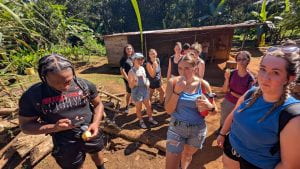Ngäbe-Buglé Comarca
Panama is home to 7 Indigenous groups, we visited the largest group Ngäbe-Buglé Comarca today. This group is the largest most populous of all the indigenous groups as it is comprised of two groups: Ngäbe and Buglé tribes. There are over 200,000 members of this group. Each group has a distinctive language and they all learn Spanish to communicate against themselves.
It’s extremely humbling to be allowed to visit the chief, Marselino and his family. Each year they welcome us into their community, I’m grateful for the opportunity to spend time learning about their ways of living, including the challenges and successes. We are invited because our hotel host, Lisa and her partner Gama lived with the group approximately 20 years ago and have developed a strong relationship and importantly built trust with the group through the years.
The hike this year wasn’t as arduous as last year as we took a different route, thankfully (If you read my post from last year or you’ve talked to me, you know what was supposed to be an easy 45 minute hike, was in fact a trek that I’m never doing again).
The Ngäbe-Buglé Comarca is representative of the simple life indigenous people live in Panama. Thatched roof homes, no electricity, no running water and a diet designed mostly around what they can grow themselves. As in many countries and with many indigenous groups, poverty is the norm and the government had stepped up efforts to provide some aid but it’s not enough. Alcoholism is common amongst the men creating additional financial difficulties.
Panama dealt with torrential rains in November which caused many farmers to lose their crops. The Ngäbe-Buglé people were not spared, yet they still warmly it welcomed us. Our visit provided some financial support for the family and we bring dog food and hygiene products as gifts.
This year, the chief Marselino, was excited to chat with Ricardo because they could chat in Spanish. The importance of being able to communicate and share common experiences was highlighted today. Ricardo grew up in a migrant family family and can relate to the physicality of farming work with low pay. It was a great connection and Marselino even posed for a photo which typically he doesn’t do.
I borrowed these words from a post Ricardo made and share them as they capture experience if the day:
“The Ngöbe-Buglé generally live in stick houses with a grass or zinc roof and a dirt floor. They live a humble life and use the resources nature provides. The women make dresses, bracelets, and bags and sell them to buy the necessities.
For the Ngöbe-Buglé, this way of life is deeply ingrained—it’s not just a lifestyle but a reflection of their identity. During our visit, Chief Marcelino and our guide, Gama, shared powerful insights about the importance of culture and staying connected to one’s roots. Their words resonated with me on a deeper level, reminding me to value where I come from and to appreciate the blessings in my own life.”
After spending time with the chief, his wife and their grandsons, we then spent time with the women of the family who prepared us lunch, showcased how they make some of the goods that they sell and were generally just a warm welcoming group.
Very humbling and peaceful visit. Our students were able to connect the things we studied in class to real life. I was proud of them for debriefing on their own at dinner, reflecting about how the visit impacted them.
We hiked out of the comarca then visited the Motta Farm. I’ll share about that visit in my next post.
Enjoy the photos!

Chief Marselino and Ricardo

Chief Marselino’s grandson chatting with students
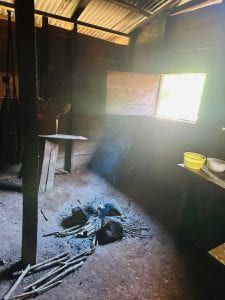
Indoor kitchen
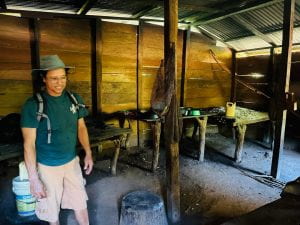
Gama in the indoor kitchen
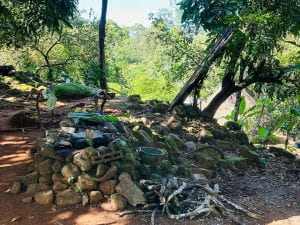
Outdoor kitchen
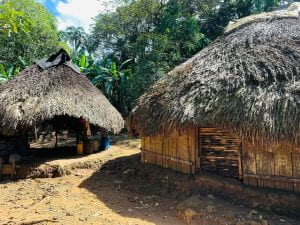
Home in the comarca
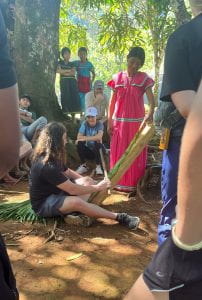
Learning to make the fibers for the bags from leaves

Using the fiber created from leaves to create thread

Thread

Bags made by the indigenous women

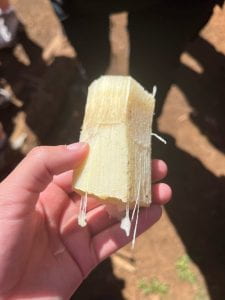
Fresh sugar cane
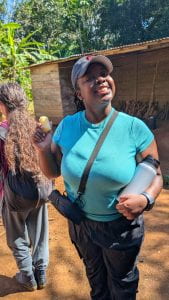
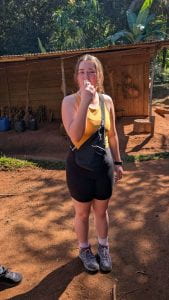

In the foreground, lunch served on a banana leaf, background are the indigenous women and children.
